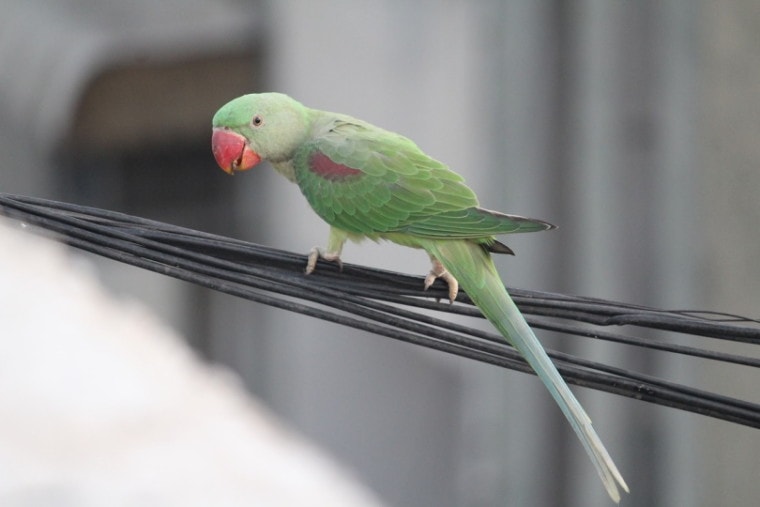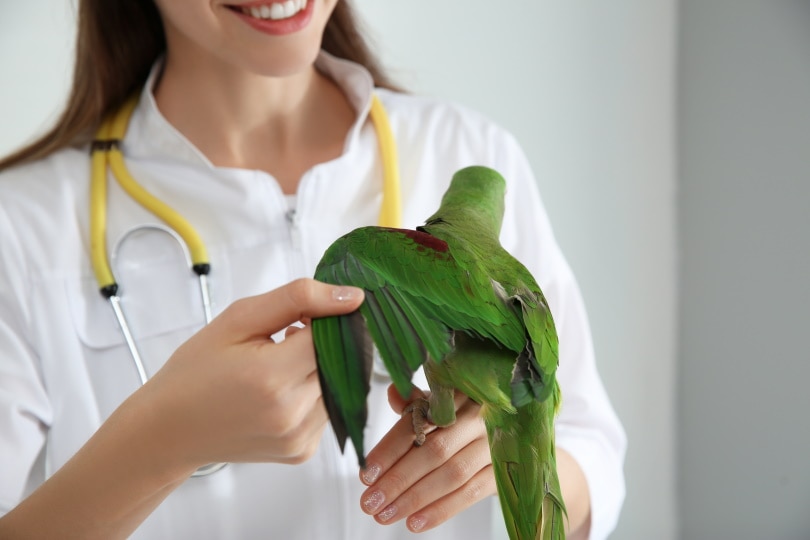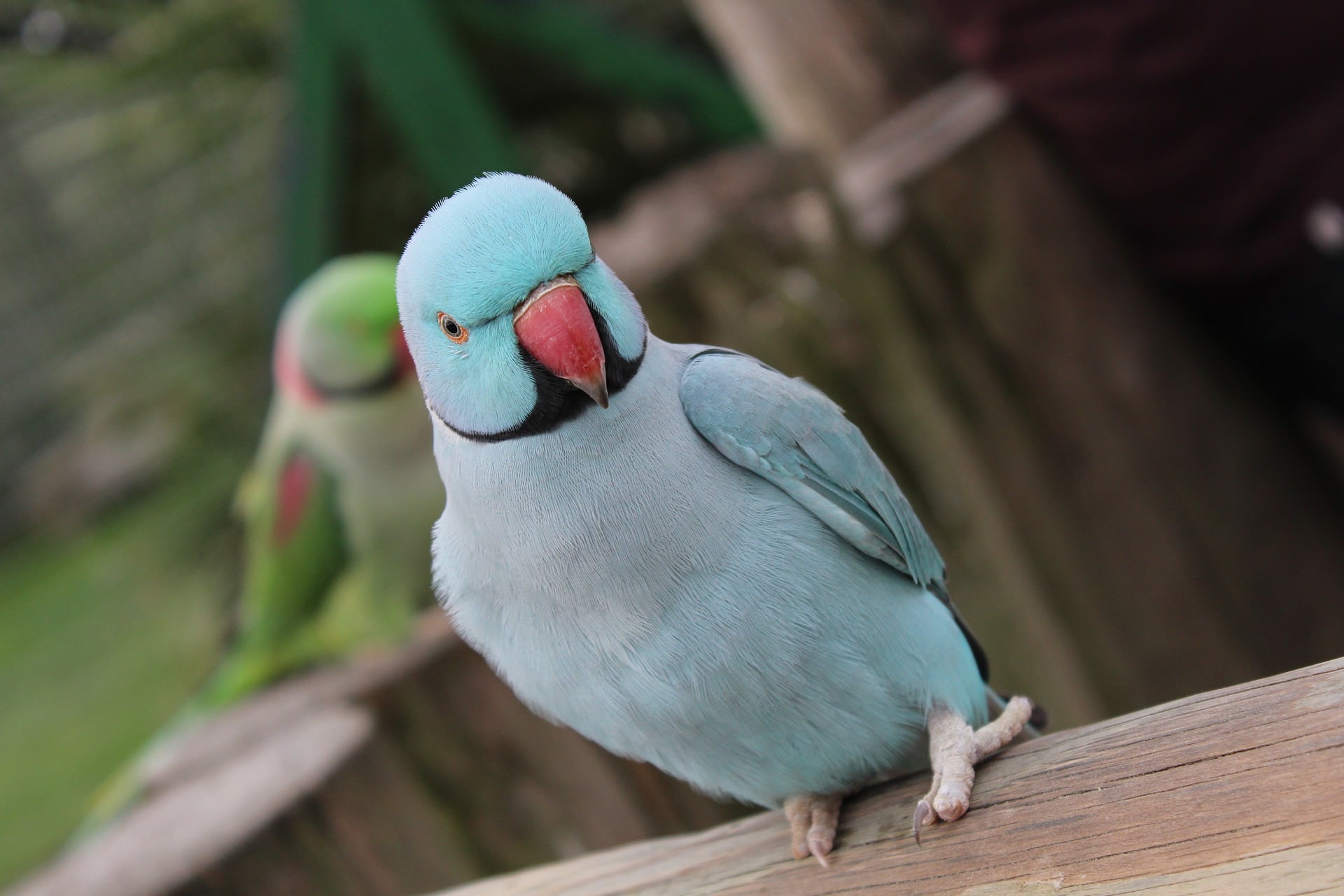
Indian ringneck parakeets also called are rose-winged parakeets are well-known for their ability to talk and their electric plumage. These beautiful creatures have a lot of personality and can make excellent pets. However, buying an Indian ringneck parakeet is the upfront cost that you should consider before adopting one.
The average cost to own an Indian ringneck is $200–$400 per year, with initial costs adding up to about $900–$1,000 depending on where you live in the U.S., Canada, or Mexico.
This blog post will discuss how much it would cost for someone who lives in America to adopt an Indian ringneck parakeet and what it includes so readers can decide if adopting this type of bird suits their lifestyle. The information provided here is a rough estimate and might vary depending on the lifestyle of the owner, but this should give you a general idea of the costs involved.
Bringing Home a New Indian Ringneck Parakeet: One-Time Costs
There are two types of costs for adopting an Indian ringneck parakeet—one-time costs and annual costs. These tiers are broken down into two categories: basic supplies and optional extras. One-time costs are the first you will encounter, so let’s take a look at them first.
Before anything else, you need to find your new avian friend. If you’re looking in your local area, it’s best to check out an avian rescue or animal shelter. This way, you know your bird is healthy and not being sold for nefarious reasons. Adoption fees usually range from $100–$1,000 depending on the location, but most places will offer a discount if you adopt multiple birds at once.
Free
Unless a friend gives it to you, it’s unlikely you’ll find an Indian ringneck parakeet for free. They are very popular and legal pets, so they an attractive option for breeders and pet stores.
Adoption

Adopting an animal is a great option for many people. Fees tend to be lower than buying an Indian ringneck parakeet from a store or breeder. In fact, some rescue organizations will not even sell their animals, and that leaves you paying adoption fees instead of purchase prices.
Adoption fees may also include all the necessary supplies like food, insects, and a cage.
Breeder
If you have your heart set on a particular breed, you may need to buy your bird from a breeder. This is more of an investment than adoption. Although the upfront costs are usually much higher, most people consider this the best way to get a healthy Indian Ringneck parakeet that has been socialized already.
The cost of an Indian ringneck parakeet from a breeder can range anywhere from $400–$1,500, depending on the type of bird you want. Some are even more expensive than others due to their colors. For example, the blue Indian ringneck parrot’s price starts at $1,500, all the way up to $2,000+.
Initial Setup and Supplies
If you adopt a bird from an avian rescue or shelter, they’ll usually provide all the supplies necessary to keep your new friend happy and healthy. However, if you buy one from a breeder or pet store, then you will need to spend money on supplies.
Here’s a breakdown of what you’ll need.
List of Indian Ringneck Parakeet Care Supplies and Costs
| Cage: | $75 |
| Toys: | $30 |
| Food: | $20 |
| Perches: | $15 |
| Lining: | $10 |
| First vet visit: | $150–$300 |
| Litter Scoop: | $10 |
| Carrier: | $40 |
| Food and Water Bowls: | $10 |
How Much Does an Indian Ringneck Parakeet Cost Per Month?

Next, we have the ongoing costs. Once you bring your new pet home, it’ll be important to budget for years to come so they have everything they need to thrive.
Health Care
Indian ringneck parakeets are susceptible to several common pet diseases, so it’s important to budget for their veterinary visits. In most cases, you should visit the vet once every six months or more frequently, depending on your bird’s health and age.
Costs can get very high if your new pal gets sick, so it’s best to be prepared.
Common illnesses
However, there are some common pet diseases you’ll need to watch out for, and they include:
- Coccidiosis. A gastrointestinal disease caused by parasites that will eventually kill the host unless treated with antibiotics.
- Parasites. This can be anything from worms to mites and ticks, but they all require veterinary attention. The treatments are usually inexpensive, but they add up over time.
- Depression. It’s a well-known fact that birds have the intelligence of a three-year-old child and can get depressed or even lash out if they’re not sufficiently stimulated.
Being alone is also very stressful to birds, so unless your new pet lives alone with you for more than five hours a day, then it’s best to bring them a friend (just make sure they are both female or neutered).
Be on the lookout for any symptoms or changes in your parrot, and report them to your veterinarian.
Food

A parakeet is a small bird, so it doesn’t eat much. In fact, a full-grown adult Indian ringneck parakeet will cost about $10 every month for food.
Most people feed their new pets one portion of the highest quality bird seed per day. This recommendation is based on how much food they need to eat in order to maintain their ideal weight.
If your parakeet grows too fat or thin, then there’s a chance they will develop an illness that gets progressively worse over time.
You should also get a small bowl and water bottle for it to leave the cage door open, and it has easy access to food and water.
Indian ringnecks love fresh fruits and vegetables for snacks but make sure they don’t eat the seeds inside.
Grooming
Birds usually do not need to be bathed, but your new pet may benefit from a quick rinse in the sink now and then. It helps remove loose dander, dust, and other foreign materials that can irritate their skin if left alone.
Since birds don’t have an oil gland-like humans or dogs, they can’t produce a natural waterproofing barrier to protect their feathers. Thus, it’s important to keep them clean and dry at all times. Rinse them gently under warm water using a soft cloth or sponge to eliminate any stubborn dirt or stains.
If you plan on bathing your bird every week, then consider getting a pet shower to help you give them a good rinse in the sink. If not, it’s best to just let them have a bath outdoors. Birds can self-clean their feathers, so all you need is a hose and 10 minutes of your time.
Once you’re done, make sure to let your pet dry off. If the air is too cold, then that can cause their body temperature to drop sharply, which can be deadly. You can also use a bird conditioner if they get too dry after a shower because that inhibits their ability to stay warm and fly.
You’ll also need a good pair of parakeet shears and nail clippers to keep them trimmed. You can buy these items at most pet stores or online.
You should brush your parakeet’s beak and nails regularly as well to stop any debris from entering their digestive tract and causing blockages. It’s also best for the health of their feet because it helps avoid illness brought about by unsanitary conditions.
Medications and Vet Visits

Indian ringneck parakeets are naturally a very healthy breed, but you still need to visit your veterinarian every six months for routine checkups.
When you do this, have the vet give them a well-rounded physical examination so they can determine if there’s anything wrong with their current health. It will also help them spot things early on before it becomes a big problem that requires expensive medication.
If your pet gets sick, you’ll need to purchase medicine and follow the vet’s instructions on properly administering it. Always make sure that the treatment is done promptly, or else there might be permanent damage to their body, or the illness will worsen until they die. Make sure that you always feed them healthy food, clean water and maintain their living quarters properly so that they don’t get sick in the first place.
Pet Insurance
As you can see, vet costs can add up quickly, which is why it might be a good idea to invest in pet insurance before the need arises. Basically, you pay a small fee every month to ensure that your pet is well-covered if they get sick or injured and have high medical expenses. The rates usually include checkups, prescriptions, lab tests, hospitalization fees, X-rays & surgery costs, etc.
Best of all is that pet insurance is usually cheaper than paying out of pocket for the same care. They can also provide you with a health profile of your new pet and how long they’re expected to live, so you know what to expect in future years (such as unexpected vet costs).
If anything goes wrong, then all you have to do is give them a call, and they help you get in contact with a professional veterinarian that provides the service for your pet.
You may have to wait for a short period before they reimburse your money, or you pay out of pocket for the expenses, but it’s still better than paying full price yourself. There are also many places online where you can compare plans to find one that’s right for you and your pet.
Environment Maintenance
Your parakeet must have a hospitable place to live. They need fresh perches, an exercise wheel, toys, and a dish of water that’s easily accessible. To keep them mentally stimulated, buy new toys every so often, have natural branches or logs for them to look at and perch on.
You’ll also need any kind of paper as a substrate, which you could probably find for free. Keep in mind that wintertime will be the worst season of all if you live in cold areas.
They will need to stay warm, and it is your job to provide them with warmth constantly. This can get expensive if you have multiple birds.
Marble statues and mirrors will bring out their colors as they are naturally attracted to shiny objects. There’s no extra cost for this because you can use ordinary household items.
| Perches | $10/month |
| Substrate | $10/month |
| Cleaning supplies | $5/month |
Entertainment
Birds, especially parrots, are brilliant creatures. They need a lot of mental stimulation to prevent themselves from getting bored. This is where you, the owner, come in and can help give your pet new toys or other objects to play with. Some examples are wooden boxes, see-saws, swings, etc. It will take you less than an hour every day to keep them busy, and it will also allow them to do some light exercise. If you have multiple birds, then all you need is one additional toy for each bird, and they can play as a group.
You probably already own a lot of things that your pet could enjoy. Just think about it: sandcastles, dollhouses, xylophones, etc. There are even specific lab toys for them, such as acrylic flying discs and toy ropes that they can chew on.
This will keep them happy, and you’ll be happy too when you don’t have to hear any constant chattering echoing throughout your home! You’re also saving a lot of money by keeping your vet bills low.
Total Monthly Cost of Owning an Indian Ringneck Parakeet
These costs are an estimate and can vary greatly depending on your location. Pet insurance is optional and not included in this estimate. But if you do choose to get it, make sure that the policy includes your new pet’s breed!
Many people forget about their birds when they tire of them, but don’t do that! Parakeets are like any other animal; they need love just as much as you do. Before buying a pet, read up on all the potential costs of owning them, and make sure that your financial situation is stable to avoid any surprises later on.
It’s much easier to spend a little money now than have to pay more in the future for negligence or other incidents regarding your parakeet that could’ve been avoided.
Additional Costs to Factor In
You might want to save a rainy day fund for unexpected expenses like vet visits or toys, furniture, or kitchenware that your parakeet may destroy. This is also a good place to store any extra money you might have leftover after meeting all of your monthly expenses for the month.
When going away for extended periods, you’ll want to make sure your parakeet has a companion or is with someone responsible who can keep them safe and entertained. If you do have to go out of town, make sure to contact your pet sitter at least one week prior so they can get used to their new surroundings.
Owning an Indian Ringneck Parakeet on a Budget

Due to the high initial costs, it could potentially be difficult for somebody on a budget to acquire an Indian ringneck parakeet, especially the rare kinds. If you do manage to cover the first year, things become drastically less expensive moving forward.
Saving Money on Indian Ringneck Parakeet Care
That being said, there are a few things you could do to save money on parrot ownership. First, you could try keeping the parakeet in a cage instead of letting it free-roam your home.
This will isolate most damage to one place and reduce the likelihood of you having to replace an expensive item or multiple items.
Also, you can fabricate many toys yourself, rather than going out to buy them, which could save you a lot in the long run. Finally, using newspaper or recycled paper as substrate could be a way to keep your bird’s cage clean for free.
Conclusion
If you’re looking for a new pet and are considering adopting an Indian ringneck parakeet, we hope this article has helped you get acquainted with these beautiful creatures. These birds have relatively low maintenance needs that make them easy to take care of, though they require daily interaction to thrive.
If you’re looking for a new pet and want something different or more exotic than your typical dog or cat, an Indian ringneck might be just what you need! Start reading our blog today to learn about all kinds of interesting animals like this beautiful creature!
Featured Image Credit: SandeepHanda, Pixabay










